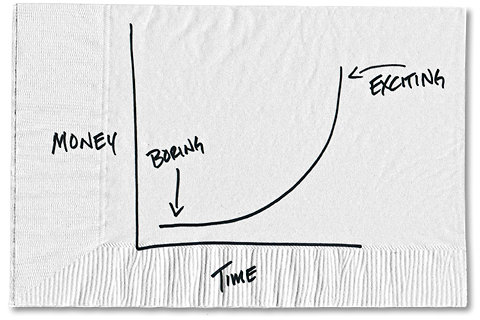He considered himself not a news photographer but a photographic illustrator, and like the work of the painter Norman Rockwell, whom he claimed as an influence, his signature images from the 1940s through the 1950s and into the 1960s, many in the fierce hues of increasingly popular color film that emulated the emergent Technicolor palate of American movies, helped define — visually, anyway — an era.
Mr. Sweet, who was 94 when he died Wednesday at his home in York Harbor, Me., took photographs that appeared on an estimated 1,800 magazine covers.
He shot, it seemed, for everyone, from top-flight general-interest publications like Look and Collier’s, to men’s magazines like Argosy, to women’s books like Family Circle, to myriad hunting and fishing publications (for which his deer and ducks were sometimes borrowed from a taxidermist), to photography magazines, recreation magazines (he shot a lot of young women on ski slopes and in bikinis on beaches) and health magazines.
He made Rockwell-like pictures of boys and their dogs, smiling soldiers returning from war, families on vacation. He also made garish photographs for lurid publications like Official Detective, for which one cover depicted a woman lying on an inflatable raft, seemingly about to be attacked by a scuba diver with a knife; and Real Romances, for which he depicted a young man and woman frolicking in a hayloft, next to the headline “Old Enough for Sin.”
Much of his best-known work was portraiture. For Newsweek, he produced images of Albert Einstein in his office, smiling at a joke about his shoes; Ingrid Bergman in a suit of armor, her costume for a Broadway play; and Bob Feller simulating his windup. He photographed Dwight D. Eisenhower as the president of Columbia University, Jimmy Durante with a butterfly perched on his famous schnozz (it was glued there), Jack Nicklaus in fake follow-through for Golf. He photographed Ernest Hemingway’s house in Key West, Fla., full of cats, for Cat Fancy.
But Mr. Sweet became most closely associated with Sport, a monthly magazine that predated Sports Illustrated and after 1947 featured dozens, if not hundreds, of his portraits on its cover. Johnny Unitas, Jim Brown, Maurice Richard, Ted Williams, Joe DiMaggio, Sandy Koufax and Mickey Mantle were all his subjects.
Sometimes, he positioned them trading-card style, in poses suggestive of action, as with Jackie Robinson seemingly in midslide; sometimes, he contrived an imaginative image, as he did with Roger Maris, with a half-dozen bats flying in the air around him. (To make the picture Mr. Sweet suspended the bats in midair with fishing line.) Still others were immediate, intimate close-ups.
He took dozens of pictures of Mantle, many collected in a 1998 book, “Mickey Mantle: The Yankee Years,” in collaboration with the writer Larry Canale. The two men later traveled together during spring training and produced a second book of old and new photographs, “The Boys of Spring: Scenic Images From the Grapefruit League, 1948-2004.”
Ozzie Sweet was born Oscar Cowan Corbo on Sept. 10, 1918, in Stamford, Conn. His parents divorced when he was a toddler. When his mother, Elsie Cowan, a nurse who was also an avid photographer, married Hardy Sweet, a mechanic, the family moved to New Russia, N.Y., in the Adirondacks. He returned to Stamford, where he finished high school and also worked as an assistant to Borglum, who had built a studio in the area.
Young Ozzie, however, also aspired to be an actor, and he moved to California, where he appeared as an extra in several movies, including “Reap the Wild Wind” (1942), a 19th-century adventure story, directed by DeMille, that starred John Wayne.
Article source: http://www.nytimes.com/2013/02/24/sports/ozzie-sweet-who-helped-define-new-era-of-photography-dies-at-94.html?partner=rss&emc=rss
